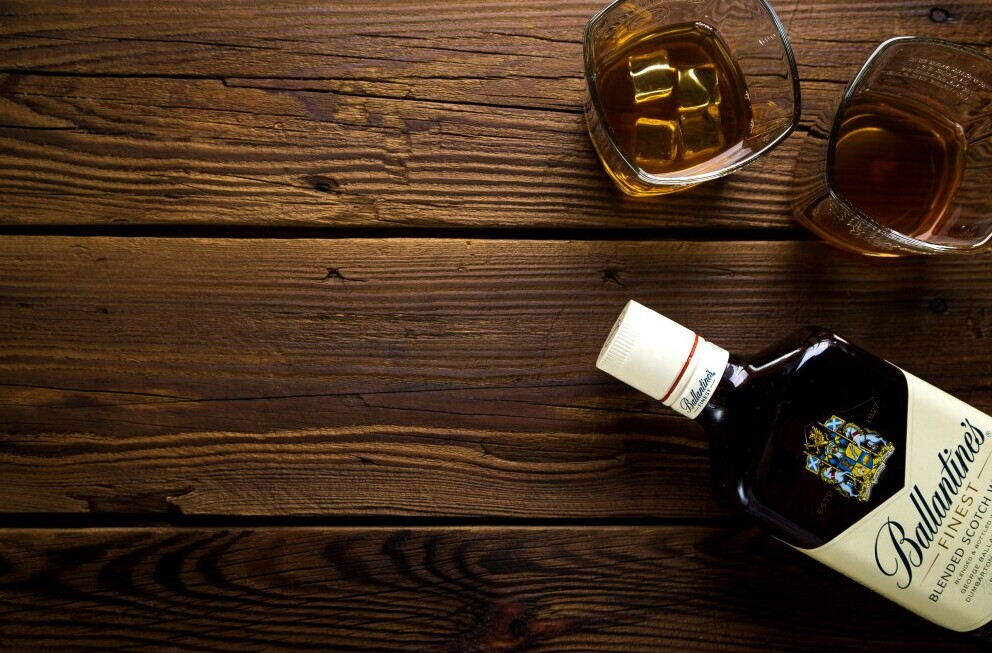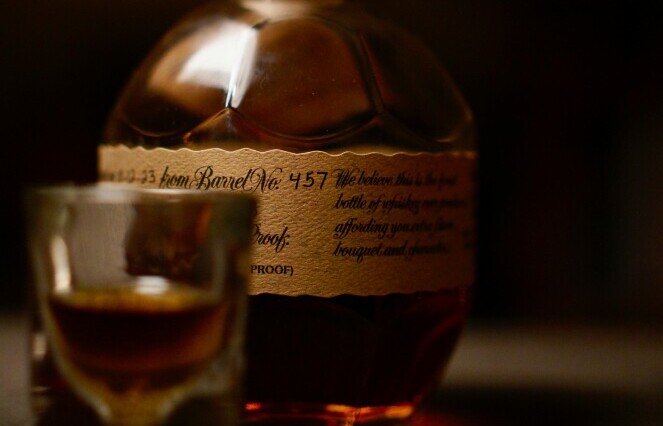Whiskey, one of the world’s most beloved spirits, has a fascinating history and variety that intrigues both casual drinkers and connoisseurs alike. However, with so many different types, regions of origin, and production methods, understanding whiskey can feel like navigating a maze. In this guide, we’ll break down the primary types of whiskey, highlighting their unique characteristics, origins, and what sets them apart.
Whiskey vs. Whisky: What’s the Difference?
Before we dive into the types, let’s address the spelling variation you may have noticed: “whiskey” versus “whisky.” The difference lies in geography:
- “Whiskey” (with an ‘e’) is typically used for spirits produced in Ireland and the United States.
- “Whisky” (without an ‘e’) is the spelling used in Scotland, Canada, Japan, and other regions.
This simple distinction often serves as a clue to the spirit’s origin.
Scotch Whisky: The Icon of Tradition

Origin: Scotland
Key Ingredients: Malted barley or grain (corn or wheat)
Scotch whisky is a cornerstone of whiskey culture. Its production is deeply rooted in tradition and regulated by strict standards:
- Types of Scotch Whisky:
-
- Single Malt: Made entirely from malted barley at a single distillery.
- Single Grain: Produced at a single distillery but uses other grains alongside barley.
- Blended: A combination of malt and grain whiskies from multiple distilleries.
- Regulations:
-
- Must be aged in oak barrels for at least three years.
- If labeled with an age statement, it reflects the youngest whisky in the blend.
Flavor Profile: Scotch whisky varies widely depending on its region of production, but common notes include smoke, peat, and a dry finish, especially in whiskies from Islay. Highland scotches are often finished in Sherry casks and have big and bold flavors while Speyside scotches can be light and fruity.
Suggestion: Balvenie Caribbean Cask 14 year.
Irish Whiskey: Smooth and Approachable
Origin: Ireland or Northern Ireland
Production: Distilled from a mash of malt and other grains
Irish whiskey is known for its smoothness, a characteristic attributed to its triple distillation process. It must be aged in wooden casks for at least three years and often includes caramel coloring.
Flavor Profile: Expect a lighter, smoother taste with grassy, grainy, or bourbon-like notes. Irish whiskey is often favored by those new to whiskey for its approachable flavor.
Suggestion: Redbreast 12.
American Whiskey: Bold and Diverse

American whiskey is a broad category encompassing several distinctive styles. Let’s explore the most notable ones:
- Bourbon:
-
- Must contain at least 51% corn in its mash bill.
- Aged in new, charred oak barrels, which impart sweet and robust flavors.
- Flavor Profile: Sweet notes of caramel, vanilla, and soft spices with hints of wood.
- Rye:
-
- Made with at least 51% rye grain.
- Known for its spicier, more robust flavor compared to bourbon.
- Tennessee Whiskey:
-
- Similar to bourbon but undergoes an additional step called the Lincoln County Process, where the whiskey is filtered through charcoal before aging.
- Flavor Profile: Slightly mellower and smoother than bourbon.
- American Single Malt:
-
- Made entirely from malted barley.
- Distilled at a single distillery, following strict guidelines similar to Scotch single malt.
- Flavor Profile: Rich and malty, often with notes of chocolate, caramel, and fruit.
Suggestions: Eagle Rare 10 Year, Frey Ranch Straight Rye, Stranahan’s American Single Malt.
Canadian Whisky: Smooth and Versatile
Origin: Canada
Production: Often features a high percentage of corn in the mash
Canadian whisky is typically lighter and smoother than its American counterparts. While it must be aged for at least three years, there are no specific requirements regarding the type of barrels used. Interestingly, in Canada, the term “rye” is often used interchangeably with whisky, regardless of whether the mash contains significant rye.
Flavor Profile: Expect a milder, sweeter taste, making Canadian whisky ideal for mixing or sipping neat.
Japanese Whisky: A Rising Star
Origin: Japan
Influence: Inspired by Scotch whisky
Japanese whisky has gained global acclaim for its meticulous production methods and balanced flavors. Like Scotch, Japanese whisky is often made using malted barley and traditional distillation techniques. However, Japanese distilleries frequently experiment with blending and cask aging to create unique profiles.
Flavor Profile: Elegant and nuanced, with floral, fruity, and smoky notes. It’s often used in highball cocktails but also shines on its own.
Key Takeaways for Whiskey Lovers
Understanding the differences in whiskey types can greatly enhance your appreciation of this diverse spirit. Here’s a quick recap:
- Scotch Whisky: Traditional, with smoky and peaty flavors.
- Irish Whiskey: Smooth and approachable, ideal for beginners.
- Bourbon: Sweet and bold, with a distinct American flair.
- Rye Whiskey: Spicy and robust, perfect for adventurous palates.
- Tennessee Whiskey: Smooth, with a unique charcoal-filtered character.
- American Single Malt: Rich and malty, offering unique flavor profiles.
- Canadian Whisky: Light and versatile, great for mixing.
- Japanese Whisky: Meticulously crafted, with refined and balanced flavors.
Whether you’re a seasoned whiskey enthusiast or just starting your journey, exploring the wide world of whiskey is a rewarding experience. Pour yourself a glass, take a sip, and savor the nuances that make each type unique. Cheers to discovering your favorite!
Frequently Asked Questions About Whiskey
- What is the best whiskey for beginners?
Irish whiskey is an excellent choice for beginners due to its smooth and approachable flavor profile. - How should I drink whiskey?
Whiskey can be enjoyed neat, with water, or in cocktails. Experiment to find what suits your palate. - What makes bourbon different from other whiskeys?
Bourbon must be made in the U.S., contain at least 51% corn, and be aged in new, charred oak barrels. - What is the most popular type of whiskey?
Bourbon and Scotch are among the most popular, but preference varies by region. - Can whiskey go bad?
If unopened, whiskey lasts indefinitely. Once opened, it’s best consumed within a year or two to retain its flavor.
These insights should help whiskey lovers and newcomers alike deepen their understanding and enjoyment of this versatile spirit. Cheers!
About Jim
Jim is the creator of Dram Discoveries, a blog dedicated to exploring and celebrating the world of whiskey. With over six years of experience, he combines a passion for whiskey’s craft and culture with a love for connecting enthusiasts through tastings, stories, and shared discoveries. For Jim, whiskey is more than a drink—it’s a journey of camaraderie, learning, and lifelong appreciation.
There are no affiliate links in this post.

Here’s a thoughtful comment you could use:
“Great article! Whiskey has always been a fascinating subject for me, and I really enjoyed how you broke down the different types so clearly. As someone who truly appreciates a good whiskey, it’s interesting to see the distinctions explained in such detail. Thank you for sharing this! Looking forward to reading more posts like this.”
Thank you so much for your kind words! I’m thrilled to hear that you enjoyed the article and found the breakdown of whiskey types clear and engaging. Whiskey truly is a fascinating subject with so much history and nuance to explore, and it’s wonderful to connect with fellow enthusiasts who share the appreciation for it. Your encouragement means a lot, and I’ll definitely aim to share more content like this in the future. Cheers to discovering and savoring great whiskey!
This is a fantastic breakdown of the diverse world of whiskey! The distinctions between regions, production methods, and flavor profiles make it easier to appreciate the complexity of this beloved spirit. I especially liked the section on Japanese whisky—it’s fascinating how they’ve adopted and refined Scotch techniques to create something unique. Do you have any recommendations for someone looking to transition from Irish whiskey to more complex Scotch varieties? Cheers! 🥃
Herman,
Thank you so much for the kind words! I’m glad you enjoyed the breakdown, especially the section on Japanese whisky—they’ve really carved out a unique space in the whiskey world, haven’t they?
As for transitioning from Irish whiskey to more complex Scotch varieties, that’s a great journey to embark on! Since Irish whiskeys are typically smoother and triple-distilled, you might enjoy starting with Speyside Scotches, like Glenlivet 12 or Aberlour 12. These have rich, fruity, and floral notes without overwhelming peatiness, offering a gentle step into Scotch complexity.
If you’re curious about exploring a bit of peat without diving into the deep end, I’d recommend something like Highland Park 12 or Talisker 10—they balance smoky notes with sweetness and spice, making them approachable but still layered.
Cheers to discovering new favorites! 🥃 Let me know what you end up trying!